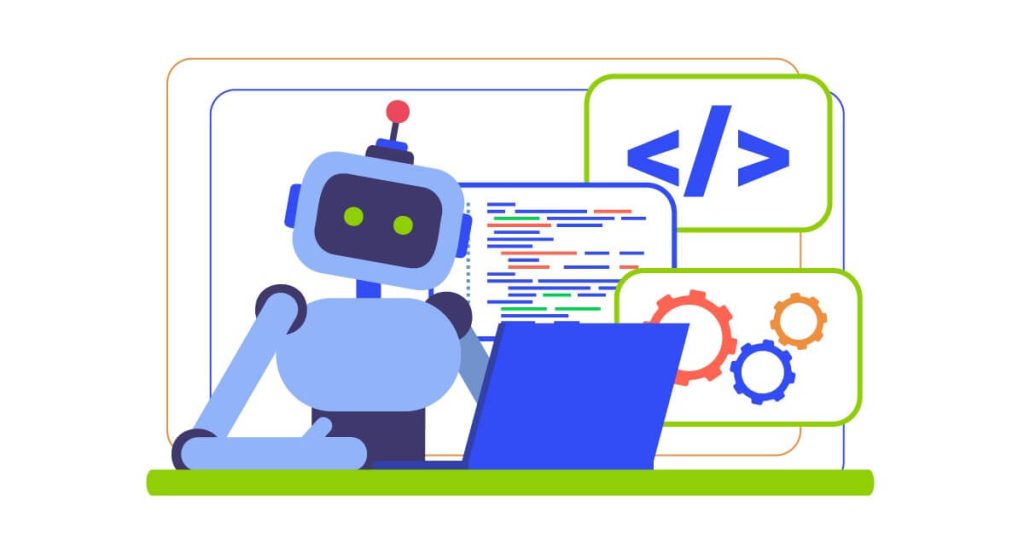The fact that it can write any application and is very strong, being flexible as well, Java soon became one of the most used implementations in the applications of Artificial Intelligence. Being robust enough to deal with complex data structures and algorithms, Java can well fit building up intelligent systems that are quick learners and can adapt to different environment scenarios. With this blog, you will learn about how to successfully implementing AI in Java projects. Java has become popular in today’s technological society, so using artificial intelligence in Java projects is important in developing good applications. An experienced Chicago web design company can build websites and on these implementations with customized recommendations that honor the use of AI in interfaces to create value for users.
Key Strategies for Implementing AI in Java Projects
Now, that you are equipped with the basics, let’s go deep into how to implement AI in Java projects.
Define the Problem and Goals
Identify a specific problem that needs to be solved through your AI application. What outcome do you seek? This level of clarity at the beginning helps with making choices about algorithms, data needs, and criteria for evaluation.
Data Acquisition and Preprocessing
Your AI project largely depends on the quality and relevance of the data at hand. Be sure that you have a sufficient volume of clean, well-structured data for the selected task. Data cleaning, normalization, and feature engineering could be some of the techniques oriented to prepare your data for using Machine Learning algorithms.
Selecting the Right AI Technique
Based on the definition created for the problem and with the characteristics of the data, a decision on the right AI technique to use can now be made. For instance, supervised learning will be applied when the data are labeled, and unsupervised learning for deep data investigation without being labeled. Deep learning, a subfield of ML that employs artificial neural networks, is particularly effective in the case of complex pattern recognition and appears exceptionally well-suited for the task of image and speech recognition.
Choosing a Java Library or Framework
AI in Java is so full of libraries and frameworks, each with its advantages and limitations. Within the list of options, there are some elements to consider: the type of AI technique one is using, the complexity of the project, and community-driven support. Here’s a table highlighting some popular choices:
| Library/Framework | Strengths | Use Cases |
| Weka | User-friendly interface, extensive set of algorithms for various tasks | Classification, regression, clustering, data preprocessing |
| Deeplearning4j | Open-source, distributed deep learning framework | Natural language processing, image recognition, time series forecasting |
| TensorFlow | Powerful, versatile framework with extensive community support | Wide range of AI tasks, including computer vision, natural language processing, and recommender systems |
| H2O.ai | Cloud-based platform with a focus on ease of use and scalability | Machine learning automation, model deployment, and interpretability |
Model Training and Evaluation
Train the chosen model on the pre-processed data. This includes feeding the algorithm with the data to allow for the learning of patterns. Many professionals interested in Java training often explore such techniques to upskill themselves and apply advanced methodologies to their projects. The model’s state-of-the-art performance should be tracked continuously using relevant set metrics based on a constant evaluation process. Techniques like cross-validation and k-fold cross-validation are put to help assess the model’s generalization capability.
Model Optimization and Tuning
After reviewing the first model run output, one should be able to fine-tune using boosting or bagging methods, hyperparameter tuning, model architecture changes, and getting additional data to increase accuracy or generalization in a certain model.
Continuous Monitoring and Improvement
The world of AI is dynamic. Observe the performance of your model when implementing AI in Java project is deployed in the real world and the possible bias that could arise. Make sure that accuracy does not degrade over time. Retrain the model with new data or re-lift a newly trained model continually, refining mathematical algorithms.
Deploy and Integrate the Model
If in the previous stage, your model has been successful with its performance, then you should go ahead and deploy it within your Java development services application. This should simply be done by serializing that model for offline use or deploying the model as a web service if one is willing to work online. Issues to do with scalability, maintainability, and monitoring will also need to be taken into account in making choices around which mode of deployment to take.
Understanding Machine Learning: The Basic of AI
Artificial intelligence can be stated as the ability to allow machines to learn from data without any kind of explicit programming, and machine learning is at the core of it. On its part, ML is based on algorithms and models for parsing data, identifying patterns, and making predictions and classifications. Here is a table showing a breakdown of all these concepts:
Types of Machine Learning
- Supervised Learning
The model is trained from a big dataset labeled with the right answer corresponding to each learned pattern. Then, it can predict these patterns for new data that has not been labeled. This resides in numerous applications such as image classification, spam detection, and stock price forecasting.
- Unsupervised Learning
This is learning from unlabeled data where the model tries to find hidden structures or patterns within the data. It is very useful for tasks such as customer segmentation, anomaly detection, and dimensionality reduction—compressing complex data to become easily understandable.
- The Training Process
This crucial phase involves feeding the chosen algorithm with a dataset consisting of input features (data points) and corresponding outputs (labels for supervised learning). The algorithm analyzes the data, adjusts its internal parameters, and learns to map inputs to outputs or identify patterns. This iterative process refines the model’s understanding and improves its performance over time.
Java and Machine Learning: A Perfect Match
A few of the positive aspects that shine through in the case of Java as a popular and leading choice for ML projects are:
Large Developer Community
A large community of developers working with Java means that more resources, libraries, and frameworks are available for ML tasks.
Platform Independence
Java is a “write once, run anywhere” designed system; your code will work correctly on different operating systems.
Object-Oriented Design
Java is an object-oriented language; that makes by default our code modular and relatively easier to reuse, so the development and maintenance of large and complex ML projects are not defined.
Mature Libraries and Frameworks
Weka has a very rich ecosystem of libraries, along with Deeplearning4j and TensorFlow, among many others, which make developers capable of using functionalities developed beforehand in different ML tasks.
Beyond the Basics: Advanced Techniques of AI in Java
As your skills get better, you will be able to understand more advanced techniques of AI in Java ecosystem.
Natural Language Processing
This facilitates the understanding and processing of human languages by machines. Java libraries, such as Stanford CoreNLP and Apache OpenNLP, with these kinds of tools, ease developers in carrying out work on sentiment analysis, text summarization, and machine translation.
Computer Vision
It teaches machines to be able to derive meaning from visual data. Java frameworks, such as OpenCV, generalize functionalities for image processing, object detection, and face recognition.
Reinforcement Learning
This is another type in which an agent learns to interact with the environment through trial and error. Some frameworks implementing reinforcement learning algorithms include RLlib, which is embedded with Java.
Future of AI in Java
The future of AI in Java is bright, and here are some of the trends that can excite.
Rise of AutoML
Automated Machine Learning (AutoML) tools simplify the development lifecycle of ML by taking care of tasks including hyperparameter tuning and model selection. This significantly enhances the accessibility of AI development, extending the capabilities of AI in Java to a larger circle of developers. By leveraging Outsource Java development services, companies can further streamline this process, tapping into expert knowledge and resources to efficiently integrate AI into their Java applications.
Increased Focus on Explainable AI (XAI)
As models for AI become more sophisticated, the understanding of a model’s decision process becomes more interesting. XAI techniques will assist developers in being able to interpret model outcomes and trust applications built on AI in Java.
Cloud-Based AI Solutions
Most cloud providers today offer their own enterprise AI solutions that easily fit into any Java application. The trend for this has been to make it easy to embrace strong AI capabilities without having to manage complex infrastructures for developers.
That way, you will be able to develop functionalities of AI in Java projects and produce intelligent applications that must solve real-life problems and drive innovations at the state of the art.
Read More : Boost data retrieval with Vector Databases in Java
Conclusion
Java’s robust capabilities and rich ecosystem of AI libraries and frameworks make it an excellent platform for building intelligent systems. This comprehensive guide has equipped you with the knowledge and strategies to embark on your journey of integrating AI into Java projects. Remember, successful implementing AI in Java project is an iterative process. Experiment, learn from your experiences, and continuously improve your skills to stay ahead of the curve in this rapidly evolving field.
Frequently Asked Questions (FAQs)
1) Why should I use AI in Java projects?
Some of the many reasons that made AI a very popular choice for Java projects are its platform independence, robustness, and availability to support. This has given it a reputation as the best means to develop scaling and efficient applications that allow easy integration within enterprise systems.
2) Which Java library is better for deep learning?
Deeplearning4j is a good deep-learning library that is mostly written in Java. It supports distributed computing and integrates further with Hadoop and Spark. In addition to building complex neural network models, it’s good for the programmer.
3) How in Java to prepare data for machine learning?
This could be done by library programmable data preprocessing offered in Weka in Java, which includes toolboxes for cleaning and transforming dirty data. Data preprocessing is a very important step before designing machine learning models to enhance the performance of those models.
4) What are some common AI applications in Java?
Among other alternate popular use cases are predictive analytics, natural language processing, computer vision, recommender systems, and anomaly detection. Java is versatile and can be used across a wide range of AI initiatives.
5) How can I perform the model deployment of an AI in Java project?
REST APIs can be added easily to the models of AI in Java project, embedded into existing Java applications, and deployed using TensorFlow Serving, among other platforms. Spring Boot is considered one of the most mature and flexible Java microservices architecture frameworks available today.
6) What are the challenges you see in using AI in Java?
The challenges of using AI in Java includes managing voluminous datasets, scalability, performance issues, and the integration of other systems. All these can be overcome by selecting relevant algorithms and tools and following best practices.
Interested in more ways to Kafka migration to Spring Boot 3.X? Read this: Kafka migration to Spring Boot 3.X



